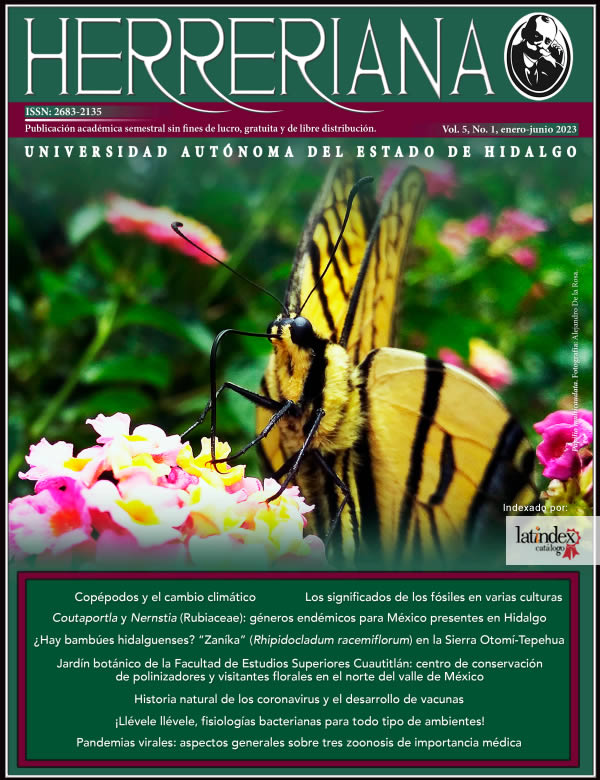The natural history of coronaviruses and vaccine development
Abstract
Coronaviruses are capable of infect the kidneys, liver, central nervous, gastrointestinal, and respiratory systems; both in humans and animals; therefore, they are pathogens of clinical, veterinary, and economic interest. These viruses tend to mutate effectively and frequently, which gives them the ability to move between different species and makes them highly contagious and dangerous. Among the diseases caused by coronavirus and that represent a threat to public health are SARS (severe acute respiratory syndrome), MERS (Middle East respiratory syndrome) and SARS.CoV-2 (COVID-19), as well like other diseases of livestock, birds, cats, dogs, and many other wild animals that represent a potential transitional reservoir for humans and domestic animals. However, there are very few viruses described for the family and it is estimated that there are more than 32,000 unknown varieties specific to mammals, so there is a high potential for infections. This essay present update and synthesized information on the history, classification, and taxonomy or coronaviruses, the relationship between virus biology and infection, mutations, and biotechnological applications for vaccine development.
Downloads
References
Avilés, F. & Rafart, J. 2005. Síndrome respiratorio agudo grave: primera pandemia del siglo XXI. Anales De Pediatría, 62(1), 6-11.
Cevik, M., Kuppalli, K., Kindrachuk, J. & Peiris, M. 2020.Virology, transmission, and pathogenesis of SARS-CoV-2. BMJ, 371, m3862. DOI: 10.1136/bmj.m3862
Cui, J., Li, F. & Shi. Z. L. 2019. Origin and evolution of pathogenic coronaviruses. Nature Reviews Microbiology,17(3), 181-192. DOI: 10.1038/s41579-018-0118-9
Du, L., He, Y., Zhou, Y., Liu, S., Zheng, B-J. & Jiang, S. 2009. The spike protein of SARS-CoV a target for vaccine and therapeutic development. Nature Reviews Microbiology, 7, 226-236. DOI: 10.1038/nrmicro2090
Mayo, M., Cique, A., Cascante, J. & Méndez, R. 2015. Prevención y control de la nueva infección ante sujetos sospechosos de infección por el nuevo coronavirus MERS-CoV en unidades militares. Sanidad Militar. 2015; 71(3), 196-200. DOI: 10.4321/S1887-85712015000300007
Oliva, J. E. 2020. SARS-CoV-2 origen, estructura, replicación y patogénesis. Alerta, 3(2), 79-86. DOI: 0.5377/alerta.v3i2.9619
Organización Mundial de la Salud. 2021. Seguimiento de las variantes del SARS-CoV-2. Fecha de consulta: 08 de diciembre del 2021. Disponible en: https://www.who.int/es/activities/tracking-SARS-CoV-2-variants/
Vásquez, M. I. 2021 La glucoproteína spike. Revista Mexicana de Mastología, 11(1), 18-21. DOI: 10.35366/99276.











